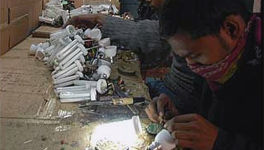Global mercury assessment 2013

An estimated 260 tonnes of mercury previously held in soils is being released into rivers and lakes reveals this new UNEP study which focuses on worldwide atmospheric mercury emissions, releases to the aquatic environment, the transport and fate of mercury in the global environment.
Communities in developing countries are facing increasing health and environmental risks linked to exposure to mercury. Parts of Africa, Asia and South America could see increasing emissions of mercury into the environment, due mainly to the use of the toxic element in small-scale gold mining, and through the burning of coal for electricity generation. The Global Mercury Assessment 2013 states that emissions of the toxic metal from artisanal gold mining are significantly greater than were reported in 2008. Rising gold prices are driving greater small-mining activity, but new and improved reporting has also provided more accurate estimates of emissions from the sector. Due to rapid industrialization, Asia is the largest regional emitter of mercury, and accounts for just under half of all global releases. The UNEP study assesses for the first time at a global level releases of mercury into rivers and lakes. The report says an estimated 260 tonnes of mercury - previously held in soils - are being released into rivers and lakes.
See Also
Report: Mercury - time to act.
Study: Mercury pollution in Sonbhadra district of Uttar Pradesh.
Feature: India's Minamata.
Report: Reducing mercury use in artisanal and small-scale gold mining.
Report: The world's worst pollution problems 2012.
Guidelines: Identifying Populations at Risk from Mercury Exposure.
Report: Toxics in that glow.
Guidelines: Disposal of mercury CFLs.
